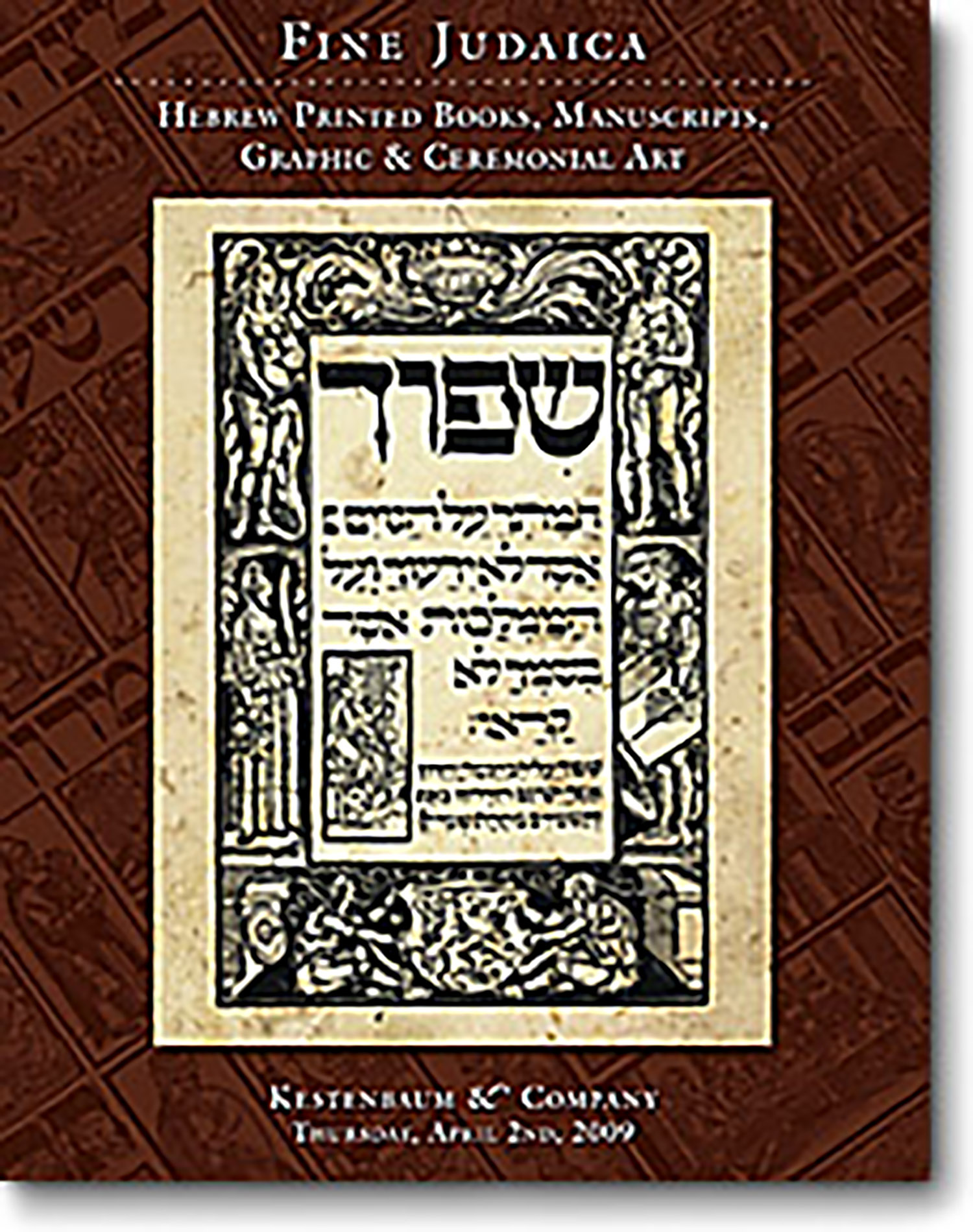Gikatilia, Joseph. Sha'arei Tzedek [Exposition of the Ten Sephiroth in ascending order]

AUCTION 43 |
Thursday, April 02nd,
2009 at 1:00
Fine Judaica: Hebrew Printed Books, Manuscripts, Graphic & Ceremonial Art
Lot 279
(KABBALAH)
Gikatilia, Joseph. Sha'arei Tzedek [Exposition of the Ten Sephiroth in ascending order]
Pisa (Italy): 1548
Est: $4,000 - $6,000
CLASSIC WORK OF KABBALAH IN THE HAND OF SAMUEL DA PISA, SCION OF ILLUSTRIOUS FAMILY OF ITALIAN RENAISSANCE BANKER-SCHOLARS
Like Gikatilia's more famous work Sha'arei Orah ("Gates of Light"), Sha'arei Tzedek ("Gates of Righteousness"), is intended as an introduction to the Wisdom of the Kabbalah, systematically leading the reader through the Ten Sephiroth in ascending order from the Sephirah of Malchuth through the Sephirah of Kether. Prof. Farber-Ginat opines that Sha'arei Tzedek is in reality an early version ("mahadura kama") of Sha'arei Orah. This is the only plausible explanation for the considerable overlap between the two works. In some instances, whole passages from Sha'arei Tzedek appear verbatim in Sha'arei Orah; other times, the material has been reworked and expanded. See Farber-Ginat, p.16, n. 23. Sha'arei Tzedek was printed in Riva di Trento in 1561. That same year, Sha'arei Orah was printed in Riva di Trento, as well as Mantua.
At the conclusion of our manuscript (ff.108v.-115v.), appears Sod ha-Chashmal (The Mystery of the Electrum) by "R. Yosef ibn Gikatilia zt"l." Sod ha-Chashmal first appeared in print in the collection Arzei Levanon (Venice, 1601), ff.40v.-42r. According to Farber-Ginat, it is inconceivable that this is an independent work by Gikatilia. Rather, Sod ha-Chashmal represents selected readings from Gikatilia's extensive Commentary to Ezekiel's Chariot (Peirush ha-Merkavah), assembled by a later editor (Farber-Ginat, pp. 15-17). The Prophet Ezekiel's vision, referred to in the Mishnah (Hagigah 2:1) as the "Merkavah," is considered one of the most ancient and crucial portions of the esoteric wisdom. Our manuscript of Sod ha-Chashmal is incomplete, wanting the last 17 lines of the printed version (see facsimile of Sod ha-Chashmal from Arzei Levanon in Farber-Ginat, pp. 24-27). There are variants between our manuscript version and the printed version of Sod ha-Chashmal. (Farber-Ginat's critical apparatus records variants between the printed version of Sod ha-Chashmal and Peirush ha-Merkavah, but not the variants in our manuscript.)
Joseph Gikatilia (or Chiquatilla) (1248-1325) was one of the first expositors of Spanish Kabbalah, interfacing with Moses de Leon of Guadalajara, famed for his publication of the Zohar. See G. Scholem, Kabbalah (1974), pp. 409-411.
The Aristocratic Da Pisa Family: In 1416, the son of Matassia di Sabato, Jechiel (Vitale) (d. 1422/3) opened a bank in Pisa. This was the beginning of a long line of banker-scholars renowned throughout the Renaissance period. Jechiel's grandson, Jechiel II (d. 1490), the most outstanding member of the family, moved to Florence, where he obtained a concession to engage in banking. On the international scene, he interfaced with the Portuguese financiers Abraham Hayun and Don Isaac Abravanel. Thanks to his influence with Lorenzo de'Medici (or Lorenzo the Magnificent), Da Pisa was able to avert an order of expulsion of the Jews set for 1488, fomented by the local Franciscan preacher. In 1527, with the downfall of the Medici, the Da Pisa family were expelled from Florence. The copyist, Samuel (Simone) da Pisa continued the family tradition of learning. In 1554, he graduated as a doctor of medicine from the University of Pisa (by special permission of Pope Julius III). See EJ, Vol. XIII, cols. 563-564
